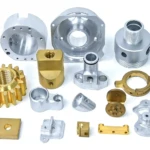Revolutionizing Waste Management with Coffee Grounds: The Rise of Mycofluid
In France, coffee is an integral part of daily life, with an astonishing 80% of the population consuming it every day. With each French person consuming an average of 5.4 kg of coffee per year, it’s no surprise that the amount of coffee grounds discarded annually is substantial. However, Danli Luo, a doctorate holder from Washington University, has transformed what was once considered waste into a valuable resource – coffee grounds. By harnessing the power of mycelium, a type of fungus, and 3D printing technology, Luo has created a sustainable alternative to plastics.
The Birth of Mycofluid
By combining coffee grounds with the spores of Ganoderma Lucidum, a non-toxic and beneficial fungus, Luo and his research team have developed a printable coffee-based paste called Mycofluid. This innovative mixture is composed of 70% coffee grounds, 20% brown rice flour, and 10% xanthan gum. Mycofluid’s unique properties make it an exceptional print material, boasting light weight, robustness, and water resistance.
From Mycelium to 3D Printing
To unlock the potential of Mycofluid, the research team used a modified Jubilee 3D printer, which can extrude large quantities of material. By incorporating the spores of Ganoderma Lucidum into the print head, the team ensured that the mycelium skin formed after printing, providing stability to the objects. The printed parts are then dried, halting the growth of the fungus, and resulting in durable, yet biodegradable, structures.
Revolutionizing Packaging Materials
The resulting Mycofluid structures exhibit a density similar to cardboard, are as strong as polystyrene, and are compostable. This groundbreaking material has far-reaching implications for the packaging industry, offering an eco-friendly alternative to plastics and polystyrene. By filling the gaps in traditional packaging systems, Mycofluid is poised to revolutionize the way we transport fragile items, such as glassware and ceramics.
The Vision for a Sustainable Future
Danli Luo emphasized the potential of Mycofluid to cater to small-scale producers and individuals who require custom-made packaging. To support this vision, the team is currently exploring other food waste-based bioplastics, aiming to develop a versatile toolkit for a more sustainable future. By integrating Mycofluid into mainstream packaging, we can collectively combat the plastic crisis and reduce waste.
Conclusion
In this innovative endeavor, Danli Luo has transformed coffee grounds into a valuable resource, harnessing the power of mycelium to create a sustainable 3D printing solution. By adopting Mycofluid, we can mitigate the plastic scourge, reduce waste, and create a more environmentally conscious future. The road to a sustainable future starts with small, innovative steps, and Mycofluid is a groundbreaking example of this potential.
The Future of Bioplastic Development
The Mycofluid research presents a pivotal step towards a more circular economy, where waste is transformed into valuable resources. Luo’s vision for a flexible development platform, capable of adapting to various bioplastics, holds immense promise. As the world grapples with the plastic crisis, innovative solutions like Mycofluid will play a pivotal role in shaping a more sustainable future.
Recommendations
- Explore Mycofluid for Custom Packaging: Businesses and individuals can capitalize on this innovative material for custom packaging needs, reducing reliance on plastics and polystyrene.
- Develop New Bioplastic Formulations: Building on Luo’s work, researchers can create novel bioplastics, incorporating various food waste materials to create a comprehensive toolkit for sustainable materials development.
- Support the Shift to a Circular Economy: By adopting materials like Mycofluid, we can reduce waste, mitigate plastic pollution, and promote a more circular economy.
As we continue to navigate the world’s plastic crisis, innovations like Mycofluid offer a beacon of hope. By embracing cutting-edge technologies and sustainable materials, we can create a better future for generations to come.

















